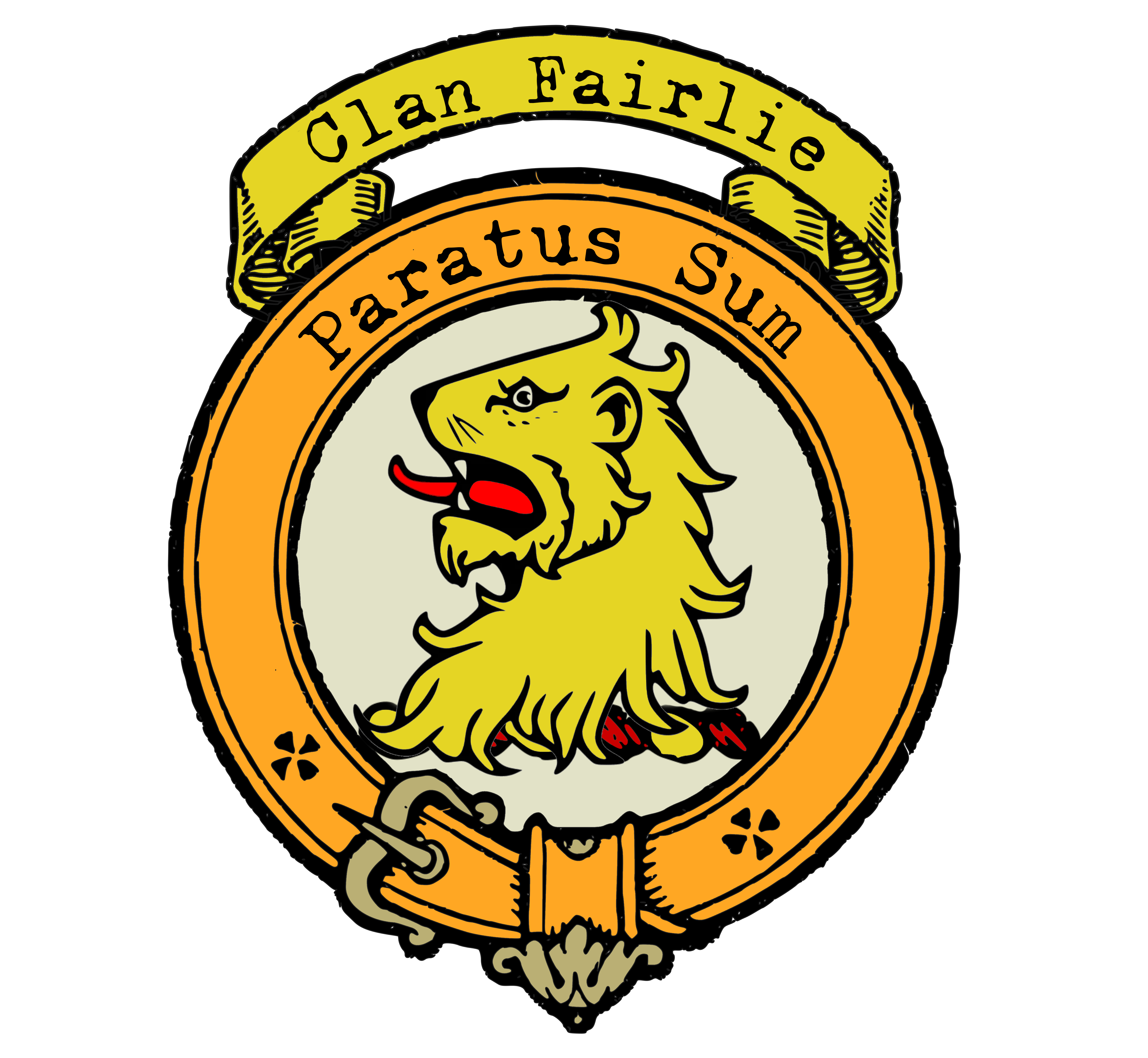Fairlie Clan
|
|
CREST: A lion’s head couped Or MOTTO: Paratus sum TRANSLATION: I am prepared VARIATIONS: N/A |
| The Scottish Clan Fairlie has a long and fascinating history that spans centuries. The clan originated in Ayrshire and was associated with the lands of Fairley, which gave them their name. Over time, the clan expanded and formed connections with other parts of Scotland, including Edinburgh.
One of the earliest recorded members of the Fairlie clan was Robert de Ross, who was the heritor of the lands of Fairly in Cunningham. This is mentioned in Nisbet’s commentary on the ragman Roll of those who submitted to Edward I of England in 1296. The arms of Ross and Fairly both contain a lion rampant, which is a common feature of Scots heraldry, but little can be deduced from this. The Fairlie clan also had connections to royalty. William Fairlie received lands at Inverleith from Robert I, and the Fairlies of Braid claimed descent from a natural son of Robert II. However, there is little evidence to support this claim. The clan’s fortunes rose and fell over time. The Ayrshire line of the clan failed to produce a male heir, and the chiefship of the name passed to the Fairlies of Braid. This line also failed to produce a male heir, and the sister of the last Laird of Fairlie married Sir William Cunningham of Robertland, Baronet, who assumed the additional name of Fairlie in 1781. Despite these challenges, the Fairlie clan has persevered and continues to exist today. In modern times, many members of the clan have distinguished themselves in various fields, including the arts, business, and politics. The clan also has a strong sense of identity and pride in its history and heritage. Fairlie tartans have been designed, and clan gatherings are held regularly, allowing members of the clan to connect and celebrate their shared history and culture. The history of the Scottish Clan Fairlie is a rich and complex one, filled with triumphs and setbacks. Despite these challenges, the clan has endured and remains a vital part of Scotland’s cultural heritage. |
|
Citations:
|
|

Purchase @ Redbubble
Purchase @ Amazon.com
Purchase @ Amazon.co.uk

